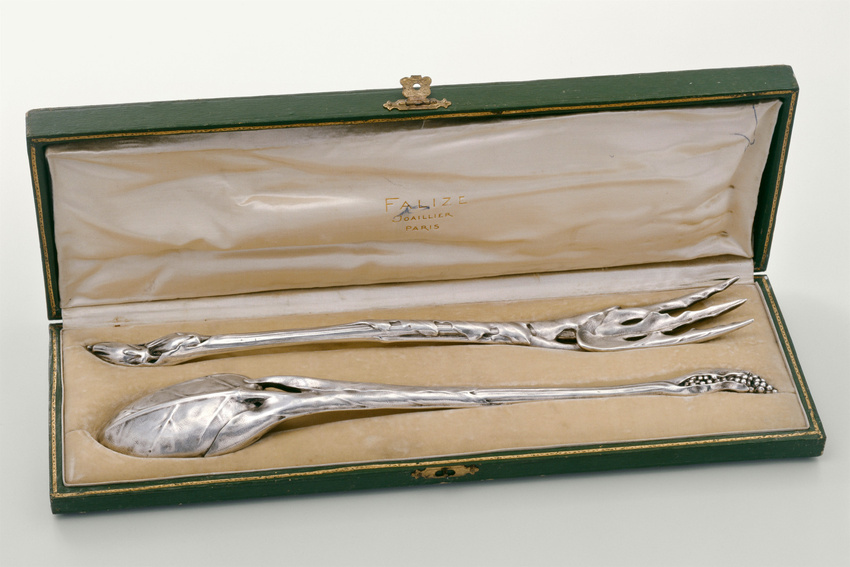Couvert de service : cuillère à décor d'oseille
Lucien Falize (1838-1897) had already presented several items at the 1889 Universal Exhibition produced as part of a silver service with a decorative theme of kitchen herbs and plants. These creations, one of which was a roasting dish with a celery motif (Paris, Musée des Arts Décoratifs), received a lot of attention.
The following year he continued this theme, putting forward a project based on plants for an exhibition at the Central Union for the Decorative Arts, which unfortunately was never carried out: "In all arts, in every society and in all eras, the plant has been used as a model: tree or flower, leaf or seed, fruit or root, we find it everywhere as the basis for form and colour. Copying a plant is the origin of all ornamentation, and the Japanese have recently brought back to us this love for flowers and vegetation in their simplest forms. Inspired by the popularity of these recent examples, our designers have returned to the study of nature".
At the end of the 1890s, Lucien Falize's son, André (1872-1936), took over the family business. With the help of his brothers Jean (1874-1943) and Pierre (1875-1953), he ran the business under the name of Falize Frères. True to their father's vision, it is not surprising to find the jewellers designing cutlery inspired by the dandelion for forks, and by sorrel for spoons. In the shape of stems and leaves, these objects bring back the French tradition of naturalist decoration for items in a dinner service.




